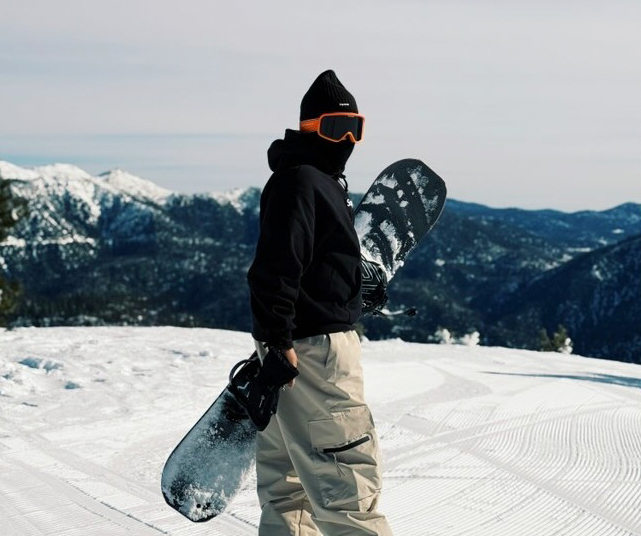

Table of contents
Ultimate Guide to Winter Jacket Fabric Types and Construction



When winter hits, a good jacket is more than a fashion statement – it's a survival essential. Whether you're braving snowstorms, commuting in the city, or heading for a ski weekend, choosing the right winter jacket depends on understanding the fabrics and construction behind it. This guide breaks it all down so you can stay warm, dry, and comfortable no matter the weather.
🧵 Common Winter Jacket Fabric Types
1. Outer Shell Fabrics
These are the jacket’s first line of defense against wind, water, and abrasion.
Nylon: Durable, water-resistant, often used in technical outdoor jackets. Can be lightweight or heavy-duty.
Polyester: Common and affordable; resists shrinking and stretching, decent water resistance.
Gore-Tex® / eVent®: High-performance membranes used in waterproof and breathable shells—ideal for snow or wet conditions.
Canvas / Cotton Duck: Heavier, rugged material (used in workwear), often waxed for water resistance.
Softshell: A blend of woven nylon/polyester and spandex, offering stretch, breathability, and light weather protection.
2. Lining Materials
Interior fabrics that provide comfort and extra warmth.
Taffeta or Nylon Lining: Smooth and lightweight; allows easy layering.
Sherpa or Fleece: Adds warmth and softness.
Quilted Linings: Often used with insulation to keep it evenly distributed.
3. Insulation Materials
These trap heat to keep you warm.
Down (Goose or Duck): Lightweight, compressible, extremely warm. Look for high fill power (600–900). Loses warmth when wet unless treated (hydrophobic down).
Synthetic (e.g., PrimaLoft®, Thinsulate™): Retains warmth when wet, dries faster, hypoallergenic. Slightly bulkier than down.
Fleece (Polyester): Used in lighter jackets or as lining. Soft, breathable, and warm when dry.
Winter Jacket - Skiing & Snowboarding
Key Jacket Construction Features
Seam sealing
Seam sealing is crucial for preventing water from penetrating through the tiny holes left by stitching. There are two primary types:
Fully Taped Seams : In this construction, every seam in the winter jacket is covered with waterproof tape or sealant, ensuring that water cannot seep through any stitch point. This is ideal for extreme wet weather conditions, such as heavy snow or rain, and is often found in high-end technical gear meant for alpine or backcountry use.
Critically Taped Seams : Only the most exposed or vulnerable seams—typically the shoulders, hood, and chest—are sealed. This option provides a good balance between weather resistance and affordability, making it popular in mid-range winter jackets used for everyday urban wear or light outdoor activities.
Baffle Construction
Baffles refer to the stitched compartments in insulated winter jacket that hold the fill in place. They play a vital role in heat distribution:
Sewn-Through Baffles : This common method stitches the inner and outer fabric layers together, creating visible seams. It is cost-effective and lightweight but can lead to cold spots at the seams where insulation is compressed.
Box Baffles : These use a more complex construction that separates the inner and outer layers with a wall of fabric, allowing insulation to loft fully. This design significantly enhances warmth and is used in premium down jackets designed for very cold climates.
Zippers & Storm Flaps
Waterproof Zippers : These are specially designed zippers with a coating or sealing that prevents moisture from entering through the zipper teeth—essential for keeping dry in snow or rain.
Storm Flaps : A protective fabric flap that covers the zipper area, shielding it from wind and moisture. Often secured with snaps or Velcro, it adds an extra layer of defense in harsh weather.
Adjustable Features
Cuffs and Hems : Elastic or Velcro-adjustable cuffs and drawcord-adjustable hems help retain body heat and prevent cold air from sneaking in.
Hood Construction : An insulated, adjustable, and possibly detachable hood enhances versatility, allowing wearers to adapt to changing weather or activity levels. Look for hoods that fit snugly without obstructing vision.
Featured Products
Summary
Think about your climate : Wet = synthetic or waterproof shells; Dry = down. Your local weather conditions should guide your choice in materials and insulation type. A breathable waterproof winter jacket is essential in humid or rainy areas, helping you stay dry without overheating. For dry, freezing climates, a high-fill down winter jacket offers unmatched warmth and comfort, especially during prolonged outdoor exposure.
Layer up : Use a base layer and mid-layer with your winter jacket for added versatility. Layering allows for better temperature control, making your outfit more functional during a variety of activities—whether you're hiking through snow, commuting to work, or enjoying a casual stroll. A quality winter jacket should accommodate layering without restricting movement.
Try before you buy : Make sure you can move comfortably and layer underneath. A winter jacket may look great, but comfort and functionality are key—check arm mobility, hood adjustability, and how it feels when worn over other layers. Don’t overlook features like adjustable cuffs, secure zippers, and inner pockets—they can make a big difference in everyday use.
Whether you're investing in a high-performance winter ski jacket or a stylish parka for the city, understanding the fabric and construction details ensures you get the right protection for your lifestyle.
Don’t forget to consider useful features like zipper quality, storm flaps, pockets, and breathability. A well-chosen winter jacket is not just about warmth—it's about comfort, durability, and confidence in any cold-weather situation.
Stay warm out there—and choose your winter jacket smartly!

















